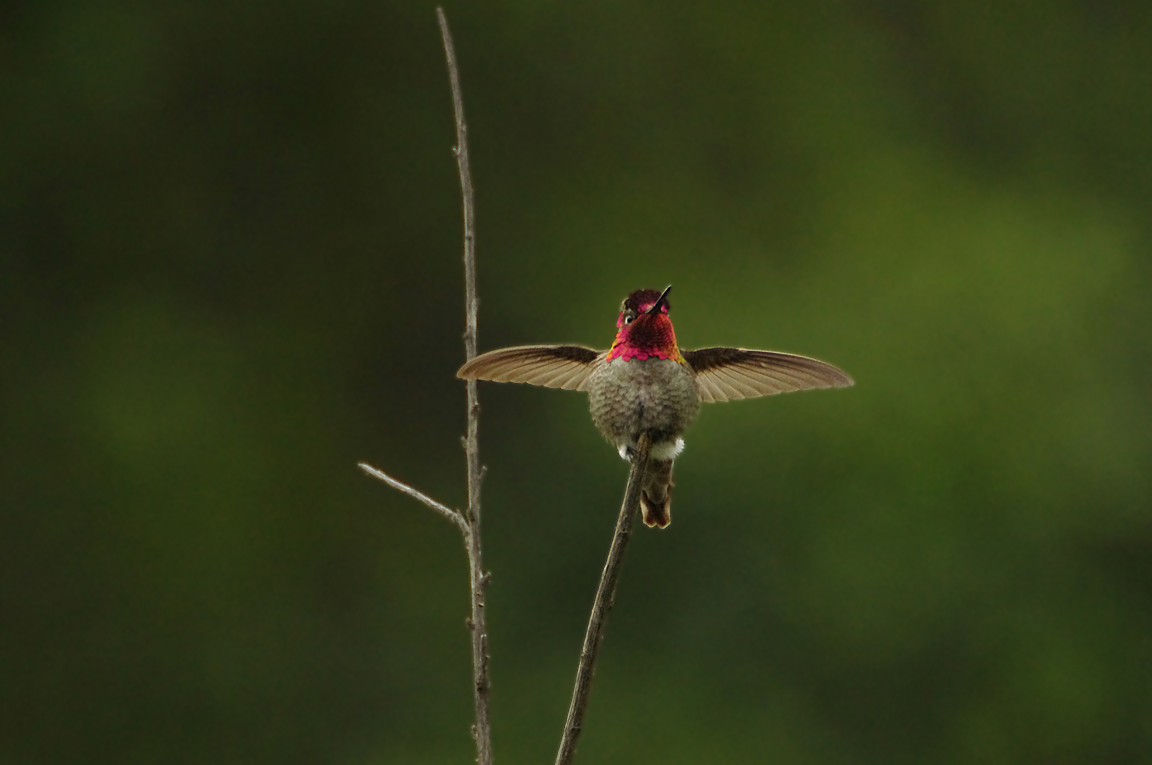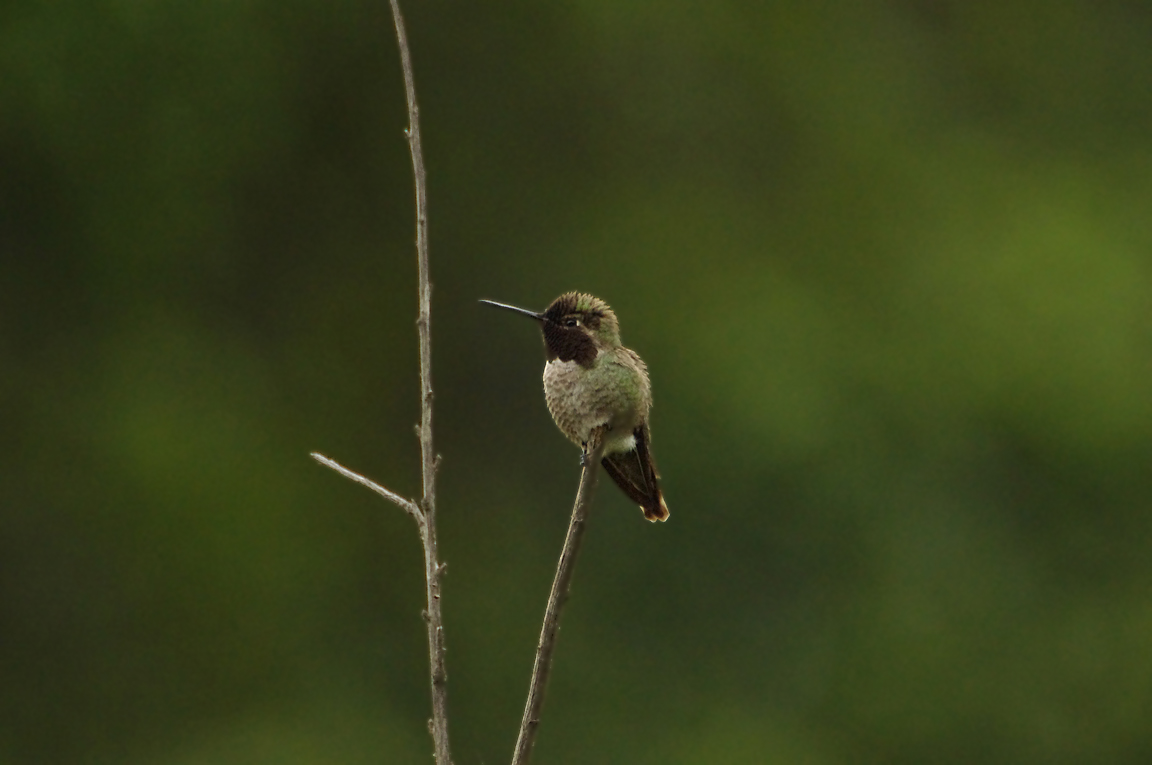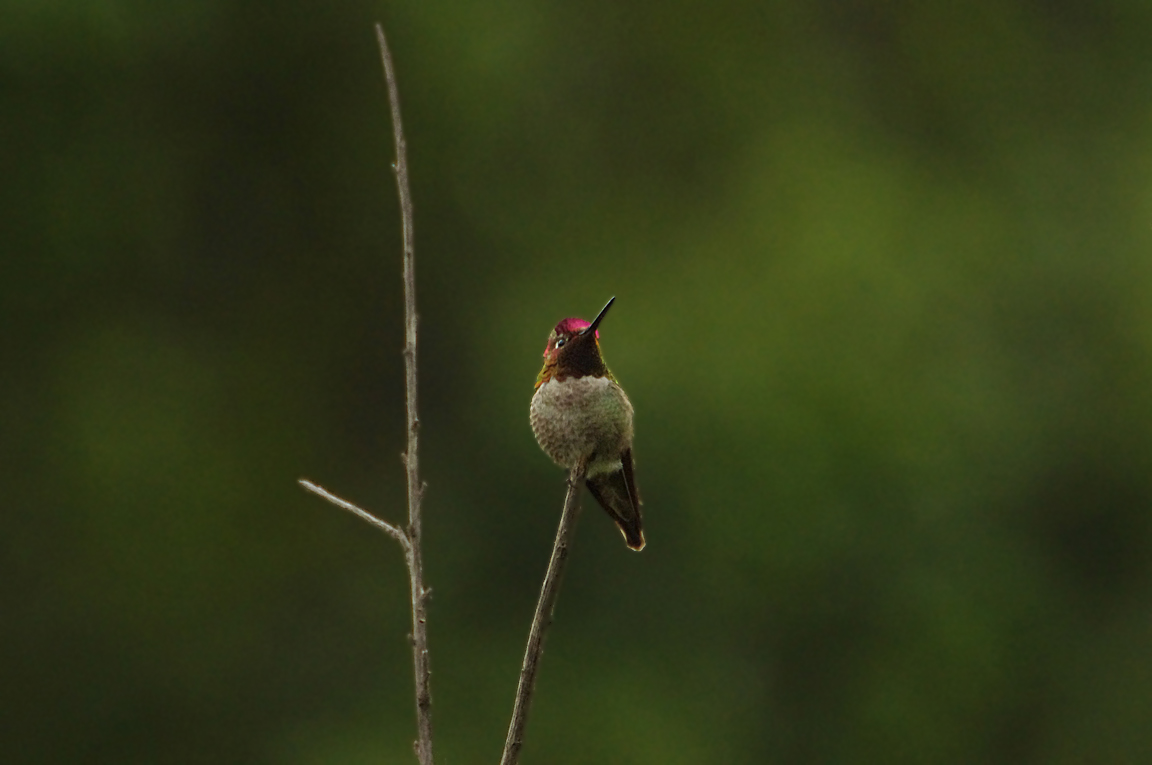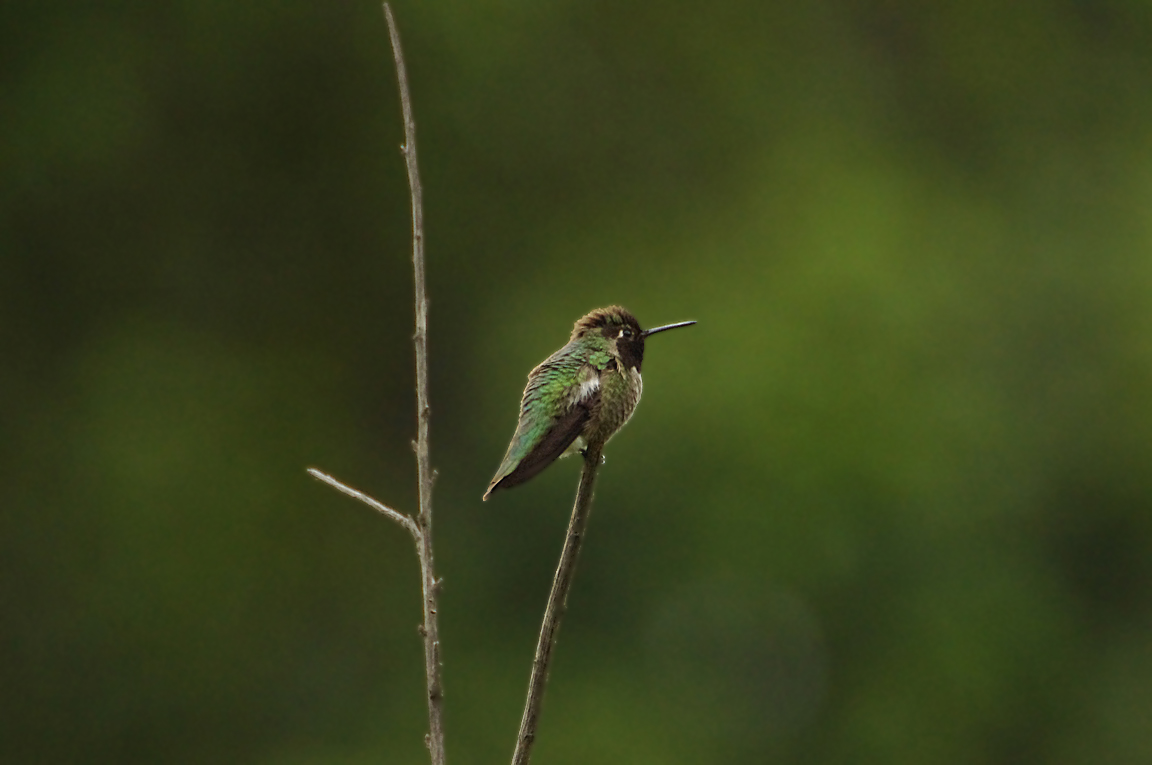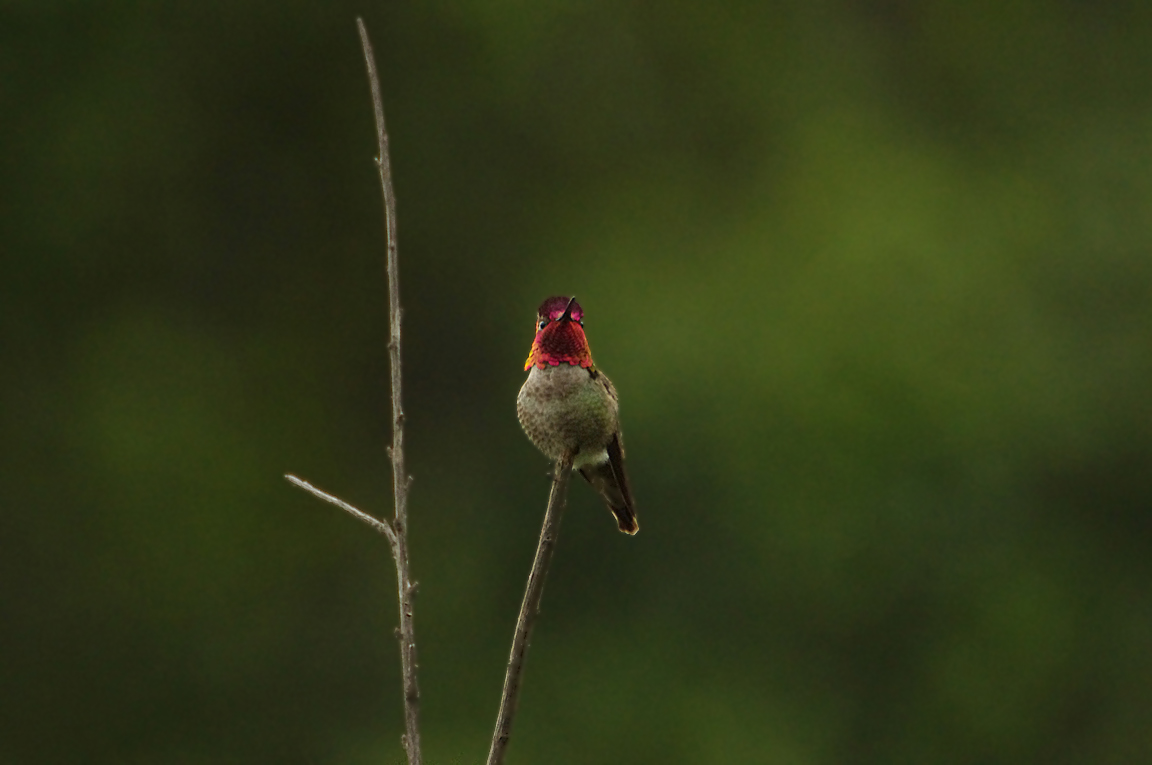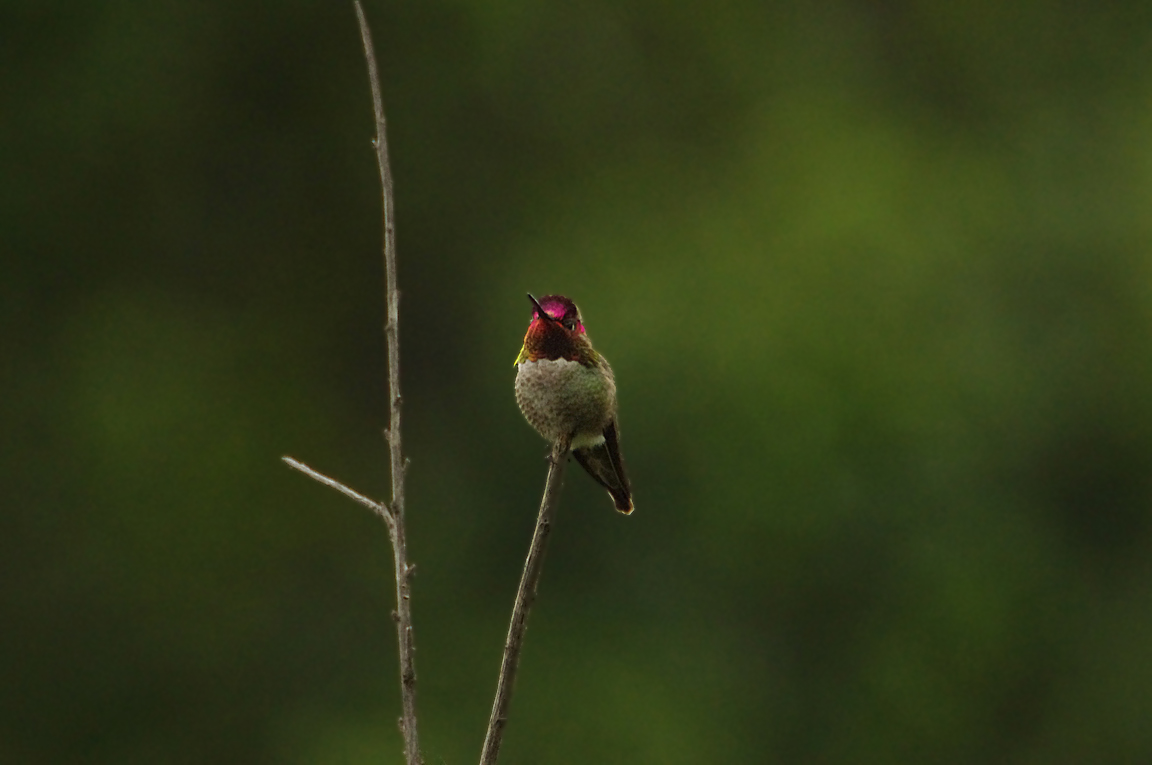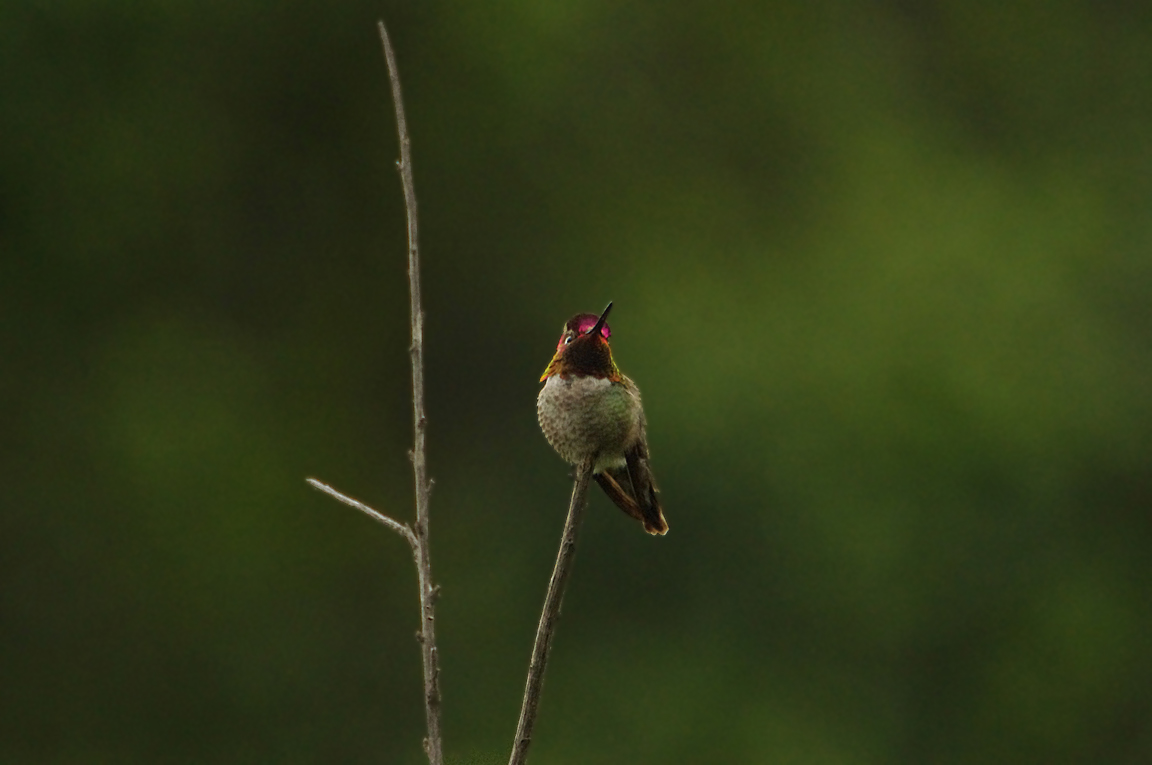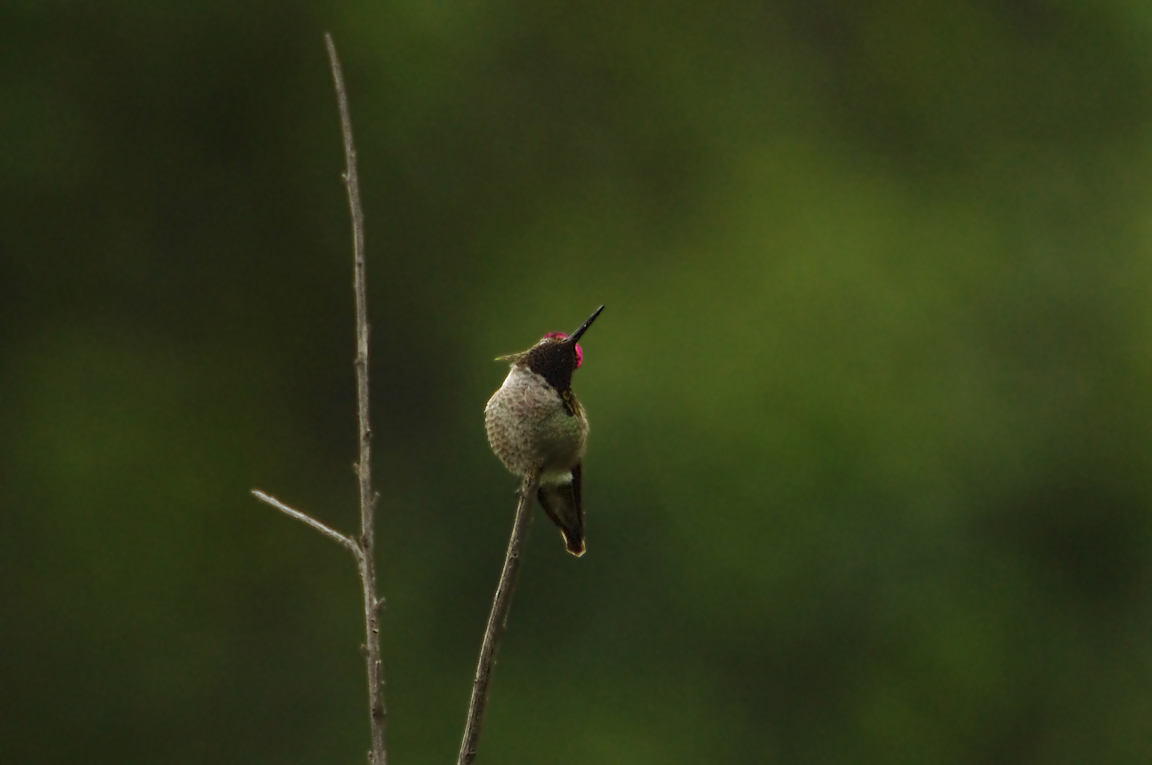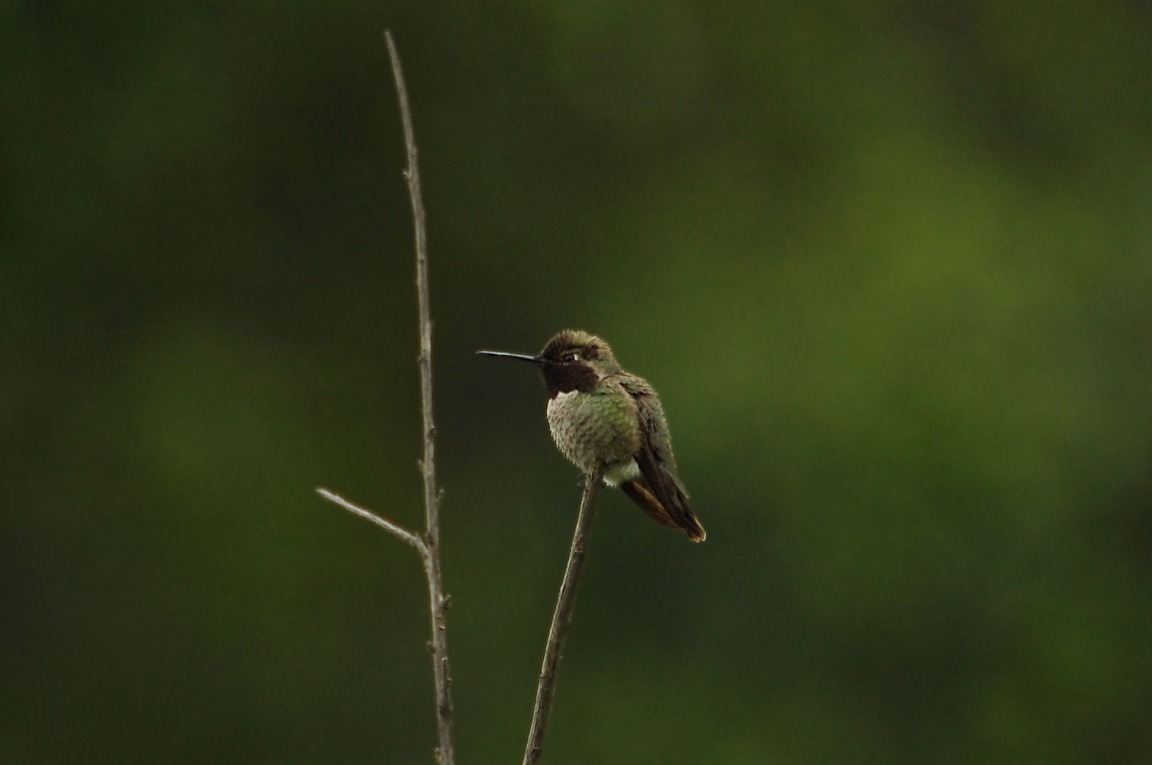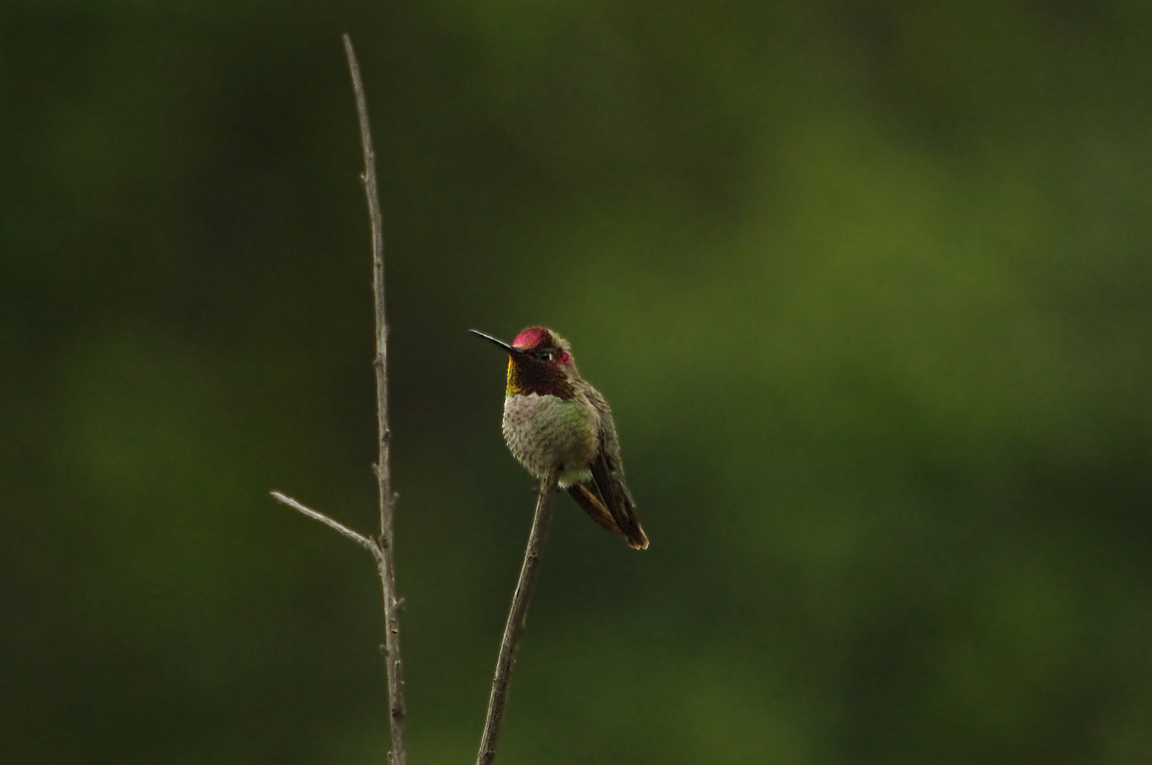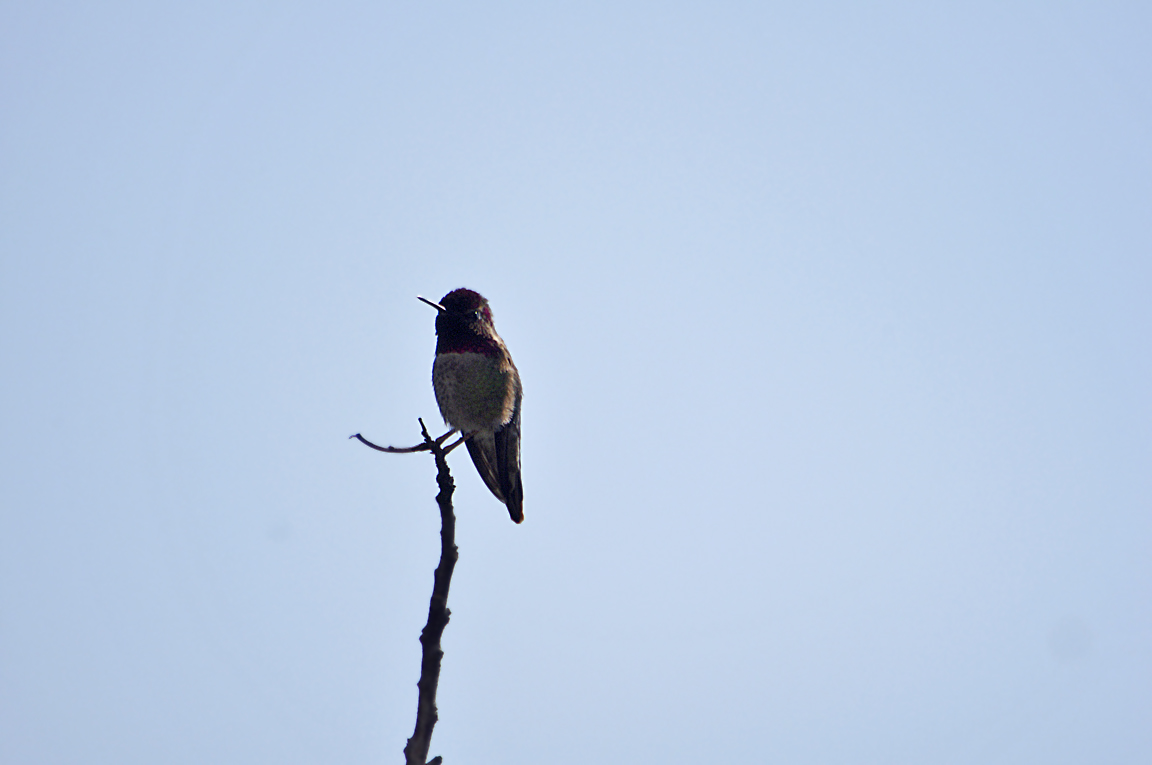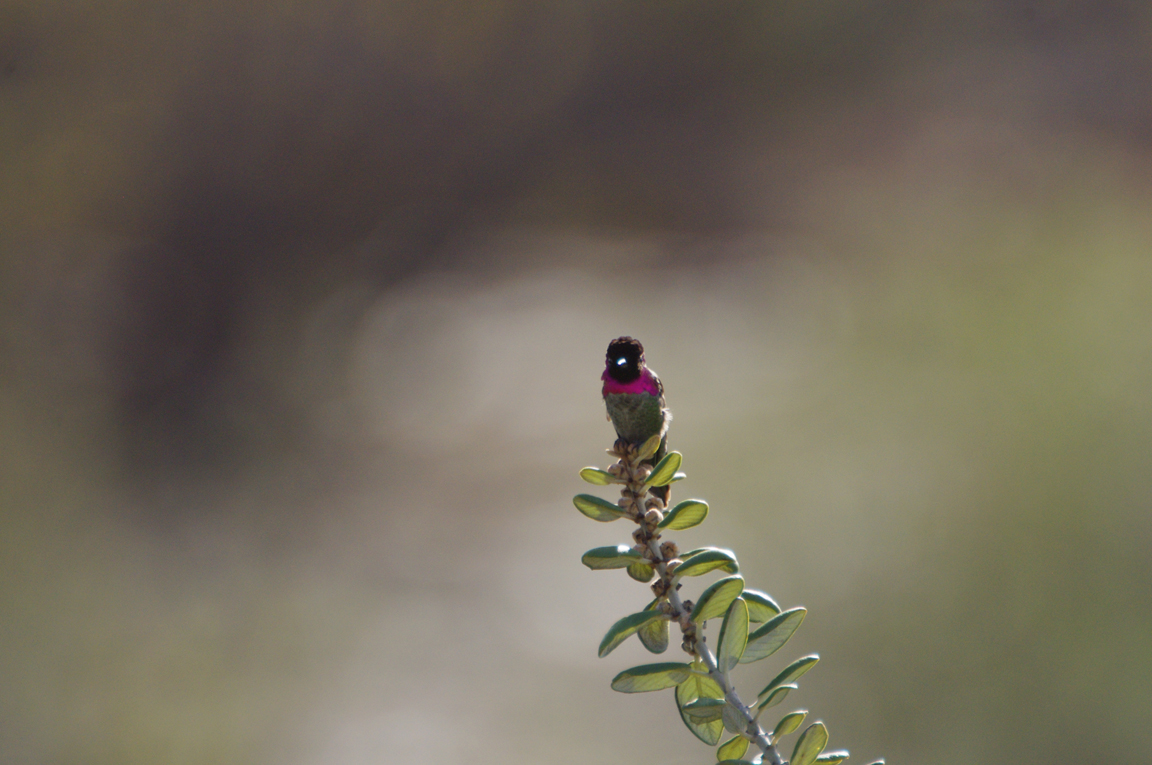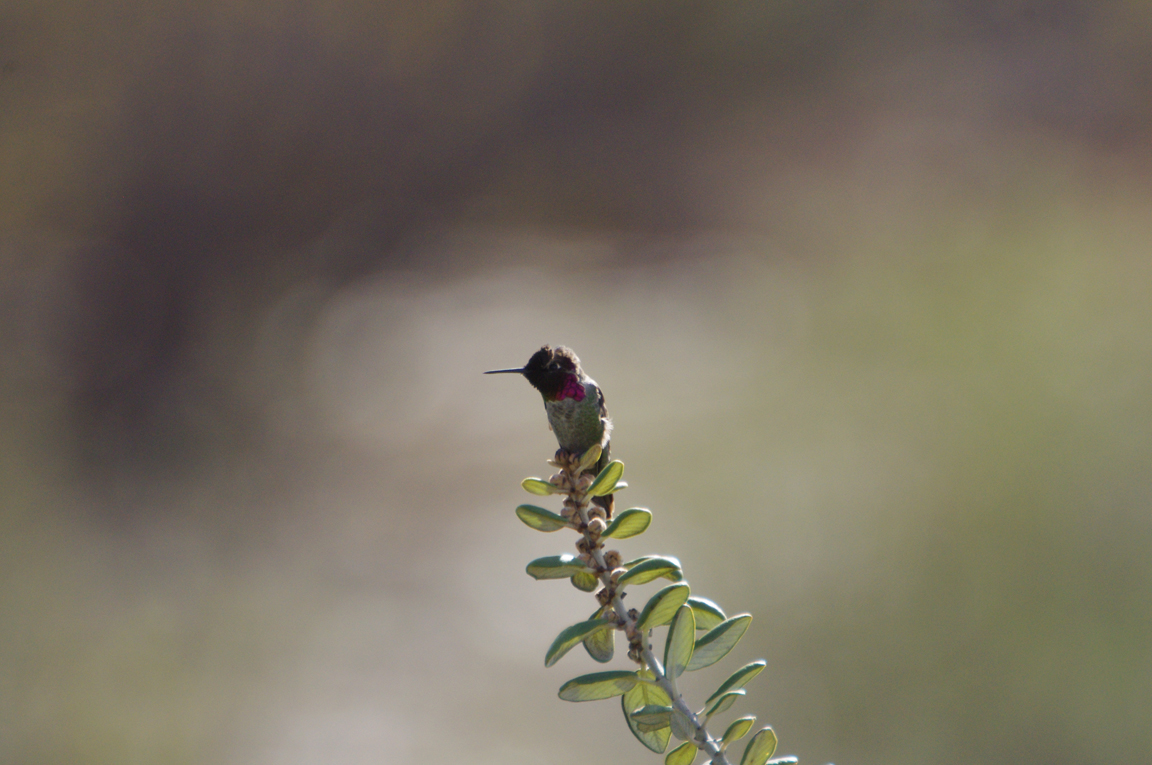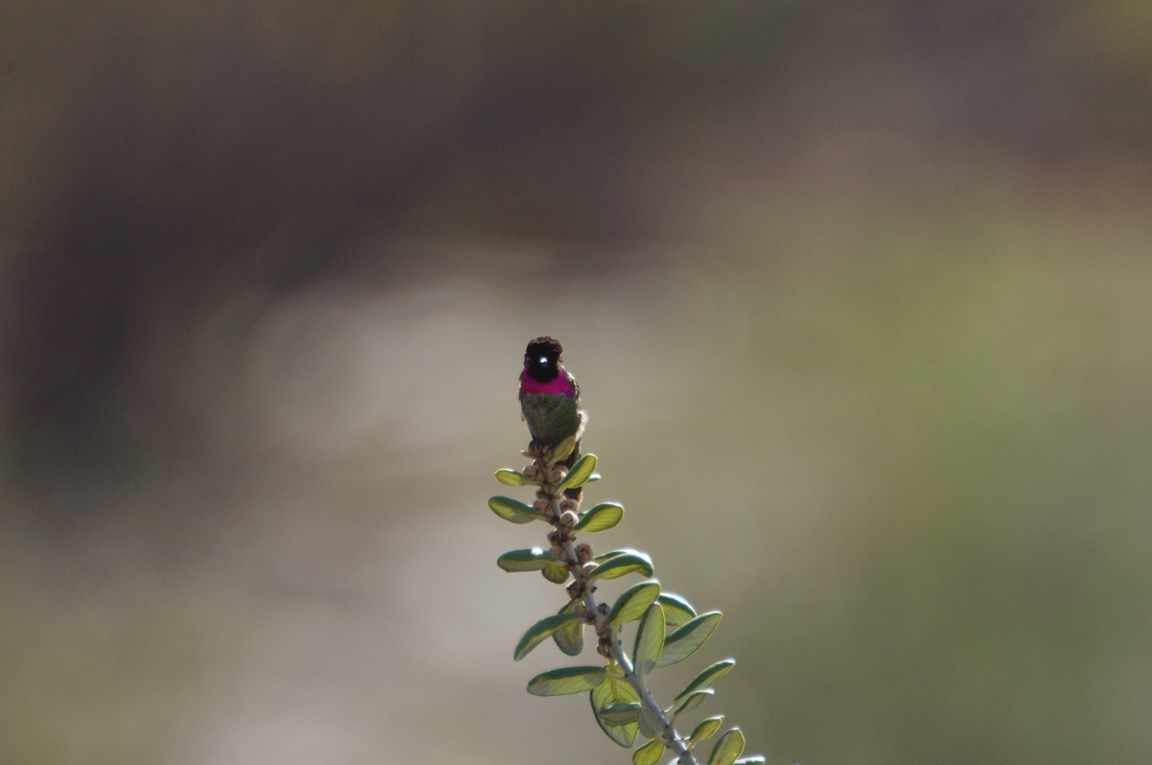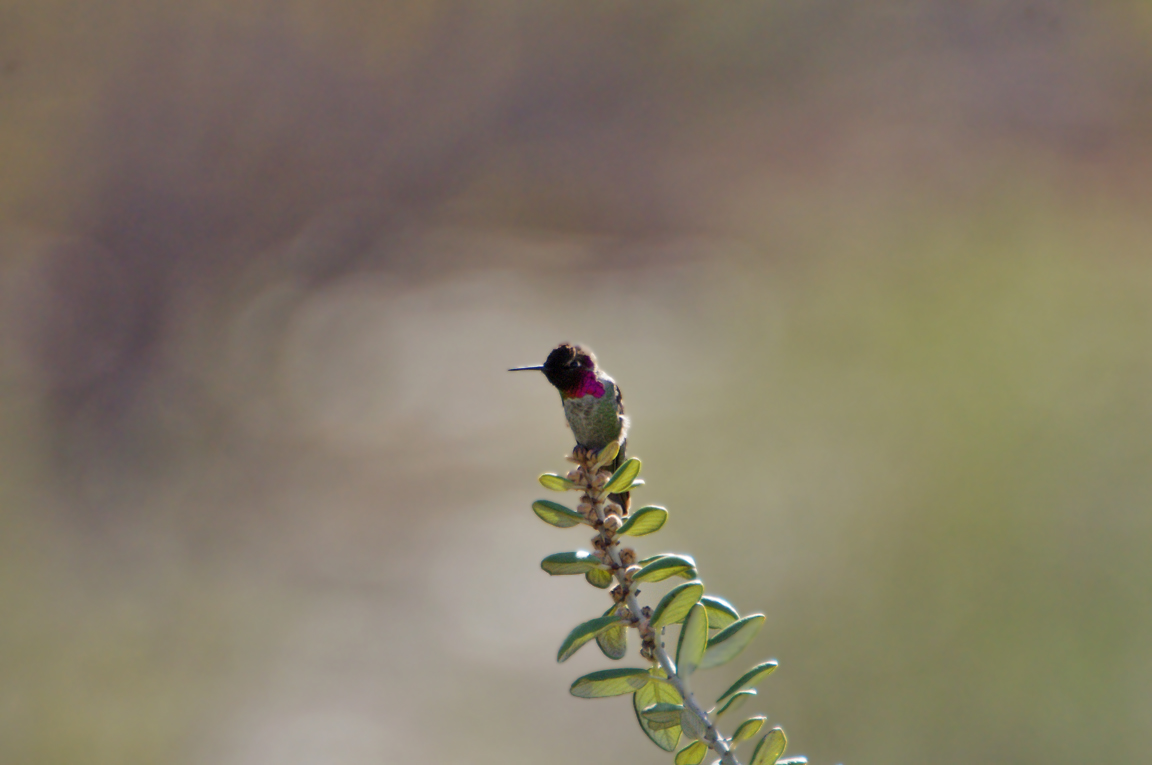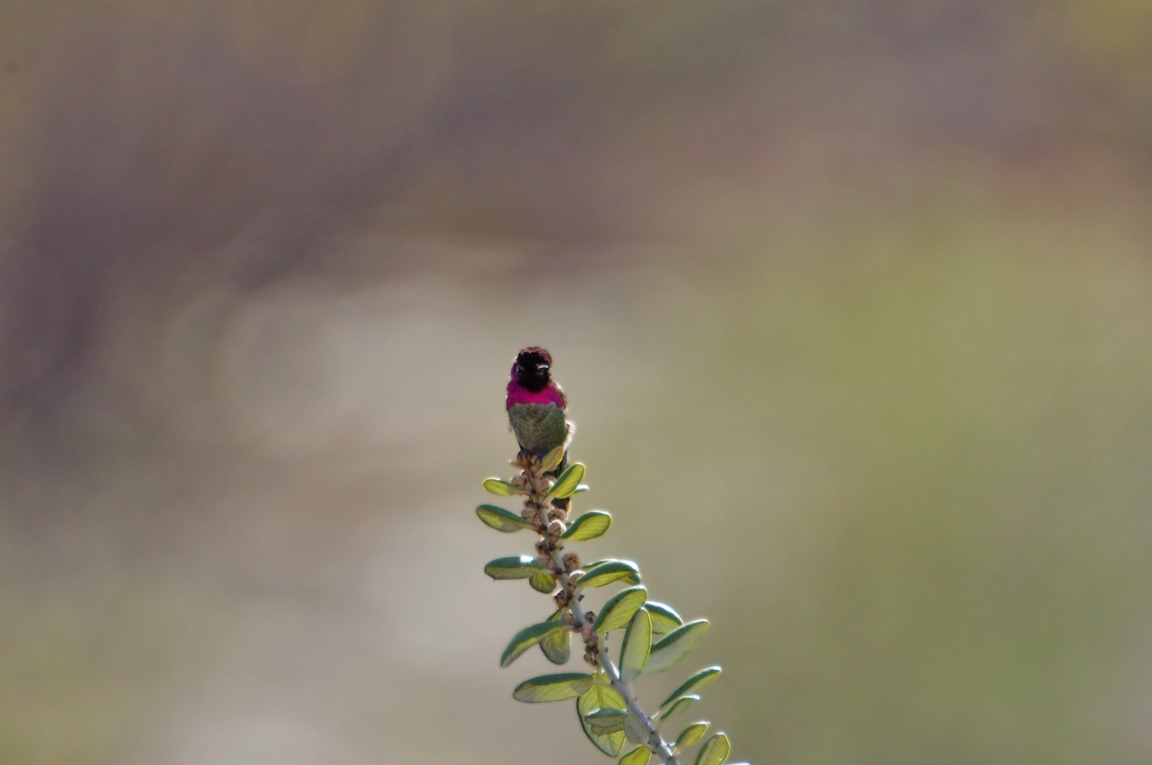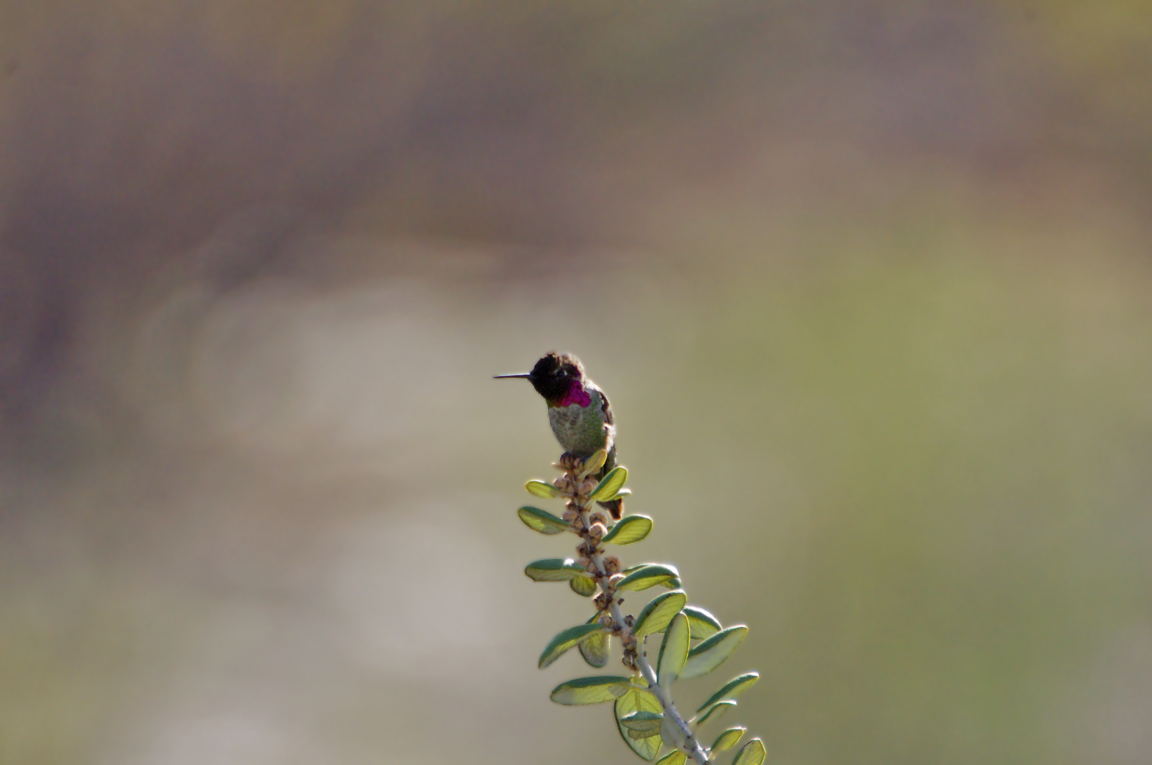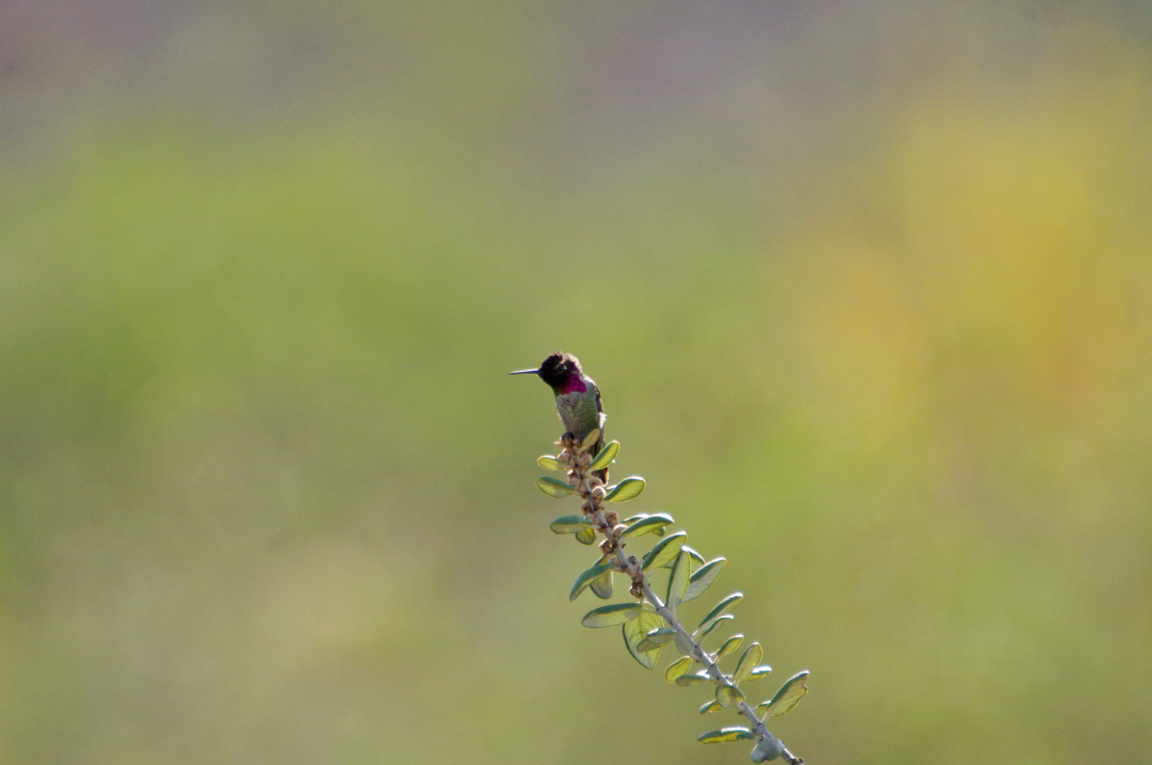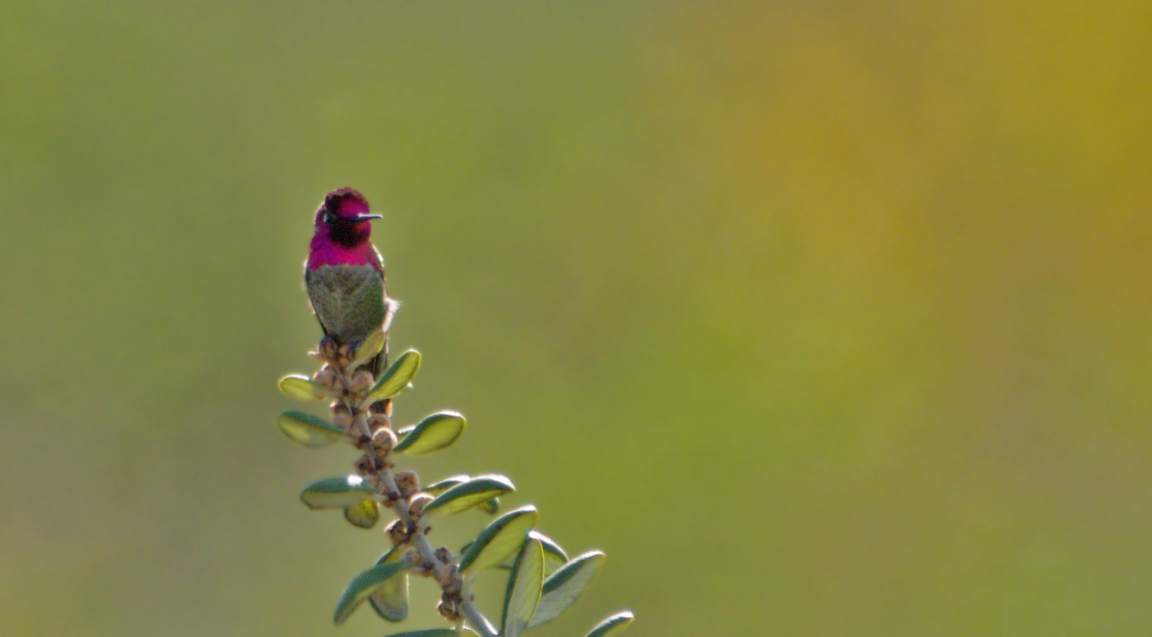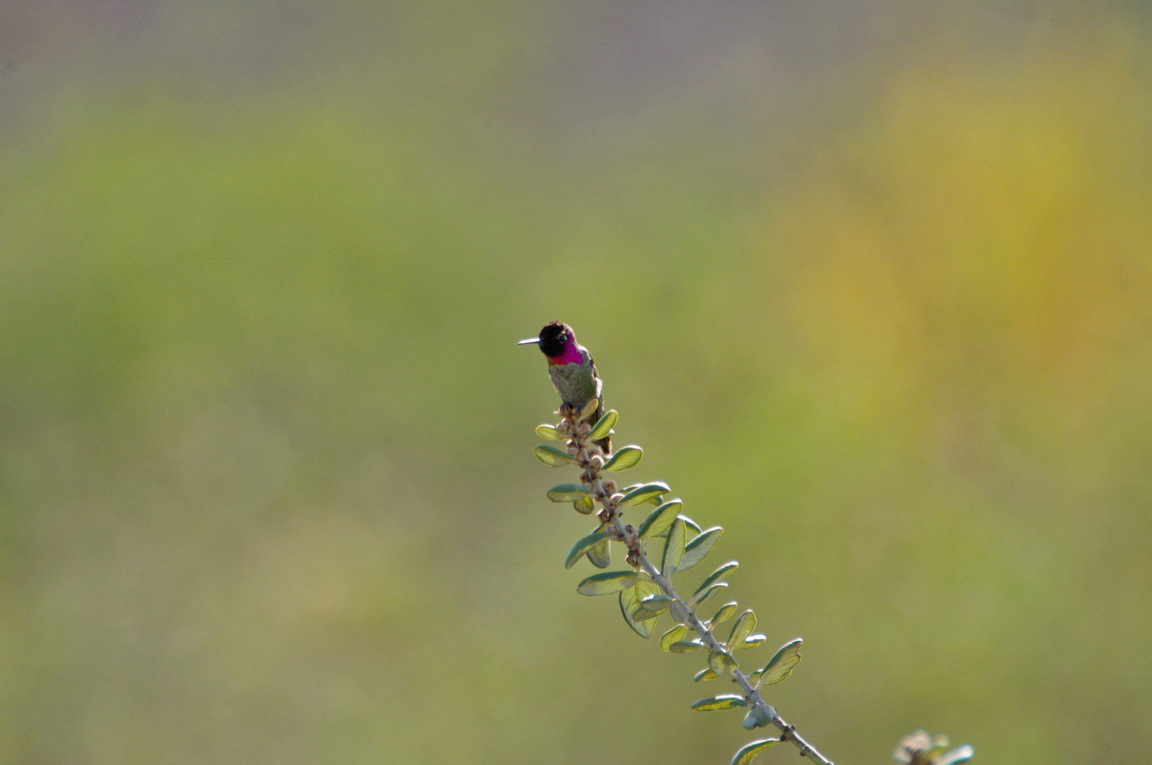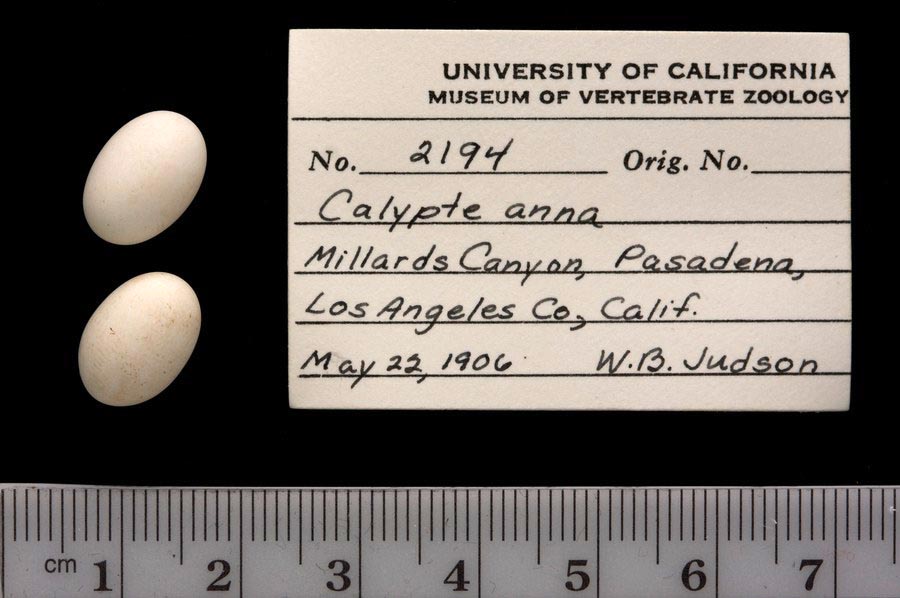|
|
|
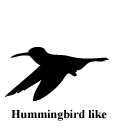 |
Anna's Hummingbird
|
| Calypte anna | |
A common bird of urban areas of the far West, the Anna's Hummingbird makes itself conspicuous by its behavior as well as its choice of habitat. The male sings frequently from exposed perches, and makes elaborate dive displays at other hummingbirds and sometimes at people.
Interesting Information
-
In the first half of the 20th century, the Anna's Hummingbird bred only in northern Baja California and southern California. The planting of exotic flowering trees provided nectar and nesting sites, and allowed the hummingbird to greatly expand its breeding range.
-
The dive display of the Anna's Hummingbird lasts about 12 seconds, and the male may fly to a height of 40 m (131 feet) during the display. He starts by hovering two to four meters (6-13 feet) in front of the display object (hummingbird or person), and then climbs in a wavering fashion straight up. He plummets in a near-vertical dive from the top of the climb and ends with an explosive squeak within half a meter of the display object. He then makes a circular arc back to the point where he began. On sunny days the dives are oriented so that the sun is reflected from the iridescent throat and crown directly at the object of the dive.
-
On rare occasions, bees and wasps may become impaled on the bill of an Anna's Hummingbird, causing the bird to starve to death.
Description
Adult Description
-
Size: 10 cm (4 in)
-
Wingspan: 12 cm (5 in)
-
Weight: 3-6 g (0.11-0.21 ounces)
-
Medium-sized stocky hummingbird.
-
Tiny compared with other kinds of birds.
-
Back iridescent bronzy green, grayish below.
-
Male has rose red throat and forehead.
-
Tail broad.
-
Bill straight and of medium length.
Sex Differences
Male with red throat and forehead, female with white throat and green forehead. Female with white tips on tail feathers. Male slightly larger.
Male
Gorget (throat) and forehead iridescent rose red. Gorget with elongated feathers projecting to the sides. Back, rump, and sides metallic bronze green. Underside grayish, with some green spots. Small white spot or streak behind eye. Tail dark; middle pair of tail feathers green, others gray; all rounded at tip. White tufts on either side of rump.
Female
Back, top of head, and two central tail feathers metallic bronze-green. Forehead sometimes dark grayish brown. Three outer tail feathers on each side with broad white tips, black central portions, and bronzy green bases. Wing feathers dark. Small white spot behind eye. Auriculars dusky. Throat grayish with some rose feathers, sometimes a large patch. Underparts dull grayish white or brownish gray with some green spots. Tufts on side of rump white.
Immature
Immatures resemble adult female.
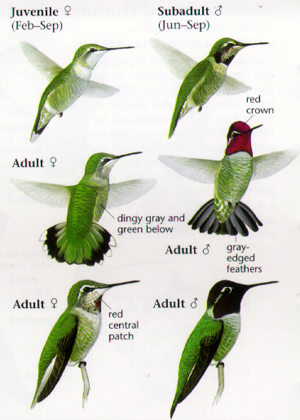
Photo taken from: The Sibley Field Guide by David Allen Sibley
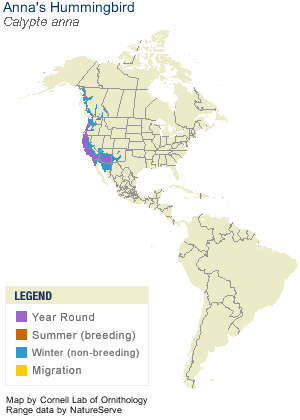
© 2003 Cornell Lab of Ornithology
|
Habitat |
|
Breeds in chaparral near open woodland, and urban and suburban areas. |
|
Behavior |
|
Hovers at flowers and sap wells (made by sapsuckers), catches insects in flight and plucks them from leaves, plucks spiders and trapped insects from spider webs. |
|
Food |
|
Flower nectar, small insects, and tree sap. Comes to hummingbird feeders. |
Taxonomy
| Kingdom: | Animalia |
| Phylum: | Chordata |
| Subphylum: | Vertebrata |
| Class: | Aves |
| Order: | Apodiformes |
| Family: | Trochilidae |
| Subfamily: | Trochilinae |
| Genus: | Calypte |
| Species: | Calypte anna |
Similar Species |
|
Costa's Hummingbird male has purple crown and throat and longer gorget projections. Both sexes have narrower and more pointed tail feathers, and thinner, slightly curved bills. |
|
Bird Sound |
|
Song a buzzy, scratchy series of squeaking phrases. Also makes chip notes and a twitter. |
|
Eggs look like this |
|
Photo taken from: ARCTOS Collaborative Collection Management Solution |
